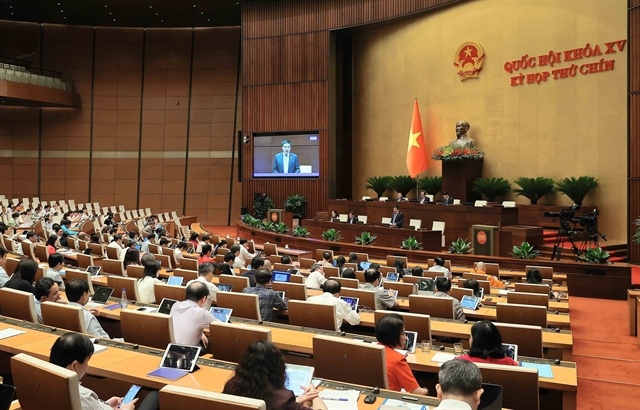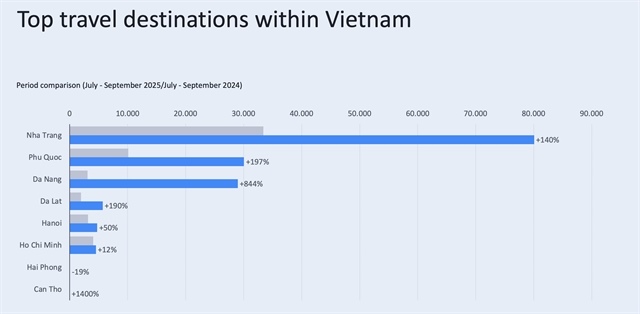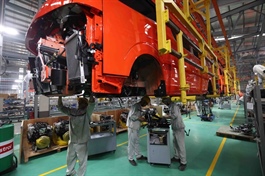Draft law on the management and investment of State capital to grant more power to enterprises
Draft law on the management and investment of State capital to grant more power to enterprises
National Assembly (NA) deputies on Tuesday heard a report on revision of the draft Law on the Management and Investment of State Capital in Enterprises.

National Assembly (NA) deputies on Tuesday heard a report on revision of the draft Law on the Management and Investment of State Capital in Enterprises. VNA/VNS Photo |
About 30 per cent of administrative procedures will be cut and 50 per cent of procedures previously submitted to the Prime Minister reduced or consolidated to the owner's representative agency, increasing decentralisation to enterprises.
These are changes made in the draft revised Law on the Management and Investment of State Capital in Enterprises.
National Assembly (NA) deputies on Tuesday heard a report on the revision of the draft law.
According to Chairman of the Economic and Financial Committee, Phan Văn Mãi, after being revised, the draft law consists of eight chapters and 59 articles, three fewer than the version submitted at the 8th session.
During the consultation process, some suggested expanding the scope to include enterprises with State direct investment of less than 50 per cent of charter capital.
Responding to this, the National Assembly Standing Committee (NASC) instructed the inclusion of provisions for managing enterprises where the State directly invests under 50 per cent of charter capital, specifying the role of “State capital representatives in joint-stock companies or two-member limited liability companies”.
It ensures comprehensive management and investment of State capital in enterprises with 50 per cent or less State ownership, based on the principle that wherever State capital exists, there must be corresponding State oversight, with appropriate measures.
Many opinions called for clarification of the provision that “State capital, once invested in an enterprise, is determined as the asset and capital of the enterprise’s legal entity.”
According to the NASC, this provision may lead to inconsistencies, as the Law on Enterprises does not specifically define whether contributed capital becomes part of the enterprise’s legal assets and capital.
Adding such a principle could conflict with the definition of State capital in enterprises under Clause 6, Article 3 of the draft law.
The draft law applies to enterprises in which the State holds more than 50 per cent and less than 50 per cent of charter capital, and such enterprises also include contributions from other shareholders or capital contributors.
The NASC also instructed a review and clarification of the scope of State capital investment, which includes sectors where State investment is deemed necessary, such as enterprises providing essential public products and services, enterprises directly serving national defence and security, those operating in strategically important areas for national defence and security, natural monopoly sectors.
The scope also covers enterprises promoting science and technology, innovation, and national digital transformation, high-tech applications and large-scale investment projects, development of key national infrastructure works and enterprises in critical, essential sectors of the economy.
To enhance enterprise autonomy in formulating strategic and annual business plans, the committee incorporated feedback to revise Article 17. Accordingly, the Board of Members or Company Chairman shall decide on the formulation and adjustment of strategic and annual business plans based on national socio-economic development strategies and targets assigned by the State ownership representative agency.
The Government is tasked with detailing this regulation.
The provision empowers enterprises to issue their own strategies and annual business plans, allowing for more proactive business operations and addressing delays previously caused by slow approval processes.
To address practical issues related to the distribution of post-tax profits, the draft law now specifies that profits after tax shall be used first to pay profits to capital contributors under business cooperation contracts (if any), then to offset accumulated losses from previous years that are no longer eligible for pre-tax deductions under the Corporate Income Tax Law and to cover expenses in accordance with specialised laws.
Additionally, it addresses losses from failed investments in high-risk, specific projects not covered by specialised laws, innovation expenses, failed innovation projects and costs of fulfilling political tasks assigned by competent authorities in accordance with Government regulations. The remaining profit is to be allocated to funds and paid into the State budget.
During the plenary discussion, many deputies agreed that the draft law institutionalises the Party and State’s policies on reforming, restructuring and developing State-invested enterprises and aligns with the Politburo’s resolutions on breakthroughs in science and technology, innovation and national digital transformation.
The draft, presented at the 9th session, reflects extensive input from NA deputies, including reductions in administrative procedures and enhanced enterprise autonomy.
Deputy Nguyễn Thị Thu Hà of Quảng Ninh Province supported the proposal allowing enterprises to decide on lending to companies in which they hold over 50 per cent of charter capital, provided that each loan does not exceed 50 per cent of the parent company’s equity and the total loan value does not exceed the actual capital contribution.
This would enable groups and corporations to better use idle resources to support their subsidiaries’ operations, Hà said
It would also provide subsidiaries access to capital at more reasonable costs compared to seeking external financing, she added.
To ensure enterprises have a legal basis to implement this regulation once the law takes effect, many suggested adding provisions allowing parent companies to decide on sources of capital for lending and the applicable interest rates.
Additionally, there were calls to ensure that such lending is not subject to constraints from other laws, such as the requirement to supplement business lines or obtain lending licences akin to credit institutions under the Law on Credit Institutions.
- 15:40 13/05/2025



























